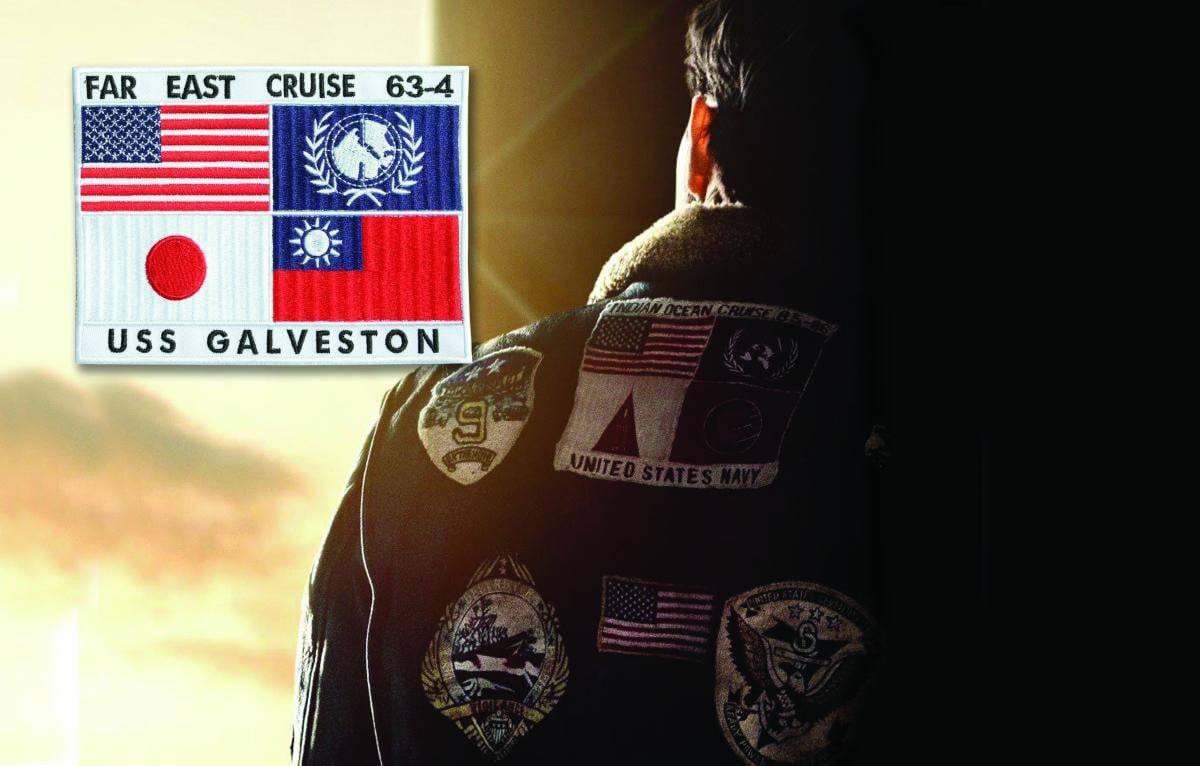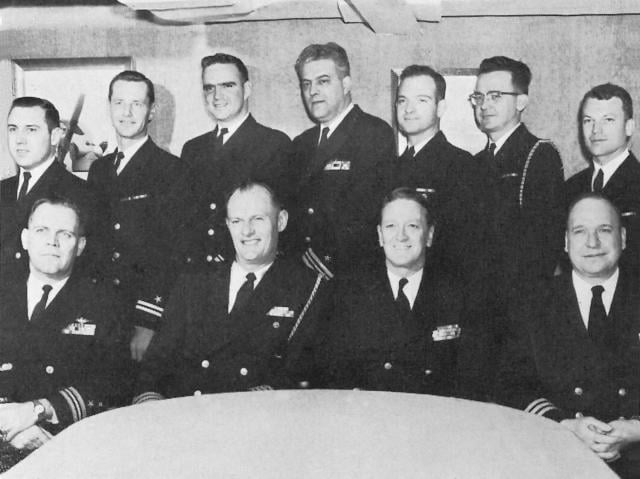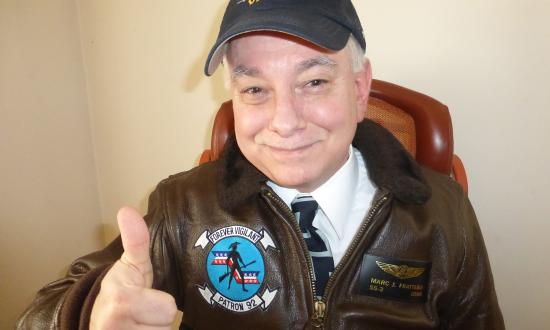The 1986 blockbuster Top Gun is among the most scrutinized films in cinema history. The story of Maverick (Tom Cruise), a rebellious pilot at the elite Navy Fighter Weapons School, reportedly led to a surge in Navy recruitment, especially in aviation-related ratings; however, critics have cited unrealistic fighter tactics, editing mistakes, errors in terminology, and brazen career-ending flight safety violations. Last summer, those same critics examined the trailer for the sequel, Top Gun–Maverick, now set to open in 2021.
The vintage G-1 leather flight jacket worn by Maverick in the first Top Gun film has been altered for the second. The jacket supposedly belonged to Maverick’s father, who flew Vietnam-era F-4 fighters. Its USS Galveston “Far East Cruise ’63–4” patch was replaced with an “Indian Ocean Cruise ’85–86” patch, presumably memorializing the first movie’s at-sea setting. But the media have alleged the Galveston patch was cut because of its Japanese and Taiwanese flags. Removing the prominently displayed banners of one of China’s historic rivals and a breakaway province reportedly was designed to placate Chinese financial backers and moviegoers. But why did the Galveston patch appear on the original jacket?
The back of Maverick’s original jacket is a shrine to Navy surface warfare, featuring patches for the U.S. Seventh Fleet; Cruiser Destroyer Force Pacific; Commander, Cruiser Destroyer Flotilla Nine; and the light cruiser Galveston. Why would a Navy pilot wear such patches? It appears to be a hidden message, an “Easter egg” in movie jargon.
The patches point to real-life U.S. Navy pilot Harry J. Post, commanding officer of the Navy’s first Fighter Weapons School, though not what would become TOPGUN.
According to the USS Galveston (CLG-3) 1963–64 cruise book, then–Lieutenant Commander Post was a member of the Commander, Cruiser Destroyer Flotilla Nine, staff and the only naval aviator on board. True to the patch, the cruiser’s “Far East” deployment took Post and his 1,200 shipmates to a half-dozen Japanese ports and Kaohsiung, Taiwan.
Post was an F-8 Crusader pilot who would go on to fly combat tours in Vietnam and command Fighter Squadron 24 (VF-24), as well as the Navy’s F-8 fleet replacement fighter squadron, VF-124. As accurately presented in Top Gun, in the wake of poor performances over Vietnam, both VF-124 and VF-121, the F-4 Phantom II fleet replacement squadron, established fighter weapons schools as remedies. The VF-124 Crusader instructors were first with a “postgraduate course in F-8 weapons”—the Crusader College. But the Phantom pilots were close behind with their own tactics course, a Navy fighter weapons school nicknamed TOPGUN. The Crusader College effort faded in the shadow of VF-121’s TOPGUN initiative. Still, one can appreciate the nod the Galveston patch offered to Post and the contributions of VF-124 to TOPGUN’s development.
The USS Oriskany and 3rd Marine Air Wing patches on the front of the Top Gun jacket may be an homage to real-life Marine Corps Captain Harlan P. Chapman, who flew F-8D Crusaders in Marine Fighter Squadron 212 (VMF-212) from the deck of the USS Oriskany (CVA-34). Chapman was the only naval aviator shot down over North Vietnam on 5 November 1965, the same day Maverick’s father was said to have been shot down in the movie. Chapman was the first Marine to become a prisoner of war in Vietnam and endured the longest imprisonment of any Marine during the conflict—2,656 days until his release on 12 February 1973. In the original movie, Charlie (Kelly McGillis) also wears a jacket that sports a USS Oriskany patch. The exploits of the Oriskany and her air wings are the stuff of legend. James Stockdale and John McCain also flew from the Oriskany to meet their fates as prisoners of war.
The remaining members of the 1986 Top Gun movie wardrobe department recall some significance tied to the patches on Maverick’s jacket, but 1986 was a long time ago, and memories fade. We may never know why certain patches were selected; regardless, they recall sacrifices and a proud history that should not be erased simply to placate foreign investors.
That said, Top Gun is just a movie. So Maverick, despite what you have said about your father being a Navy F-4 pilot, there is every possibility he was an F-8 pilot . . . and maybe a Marine.







